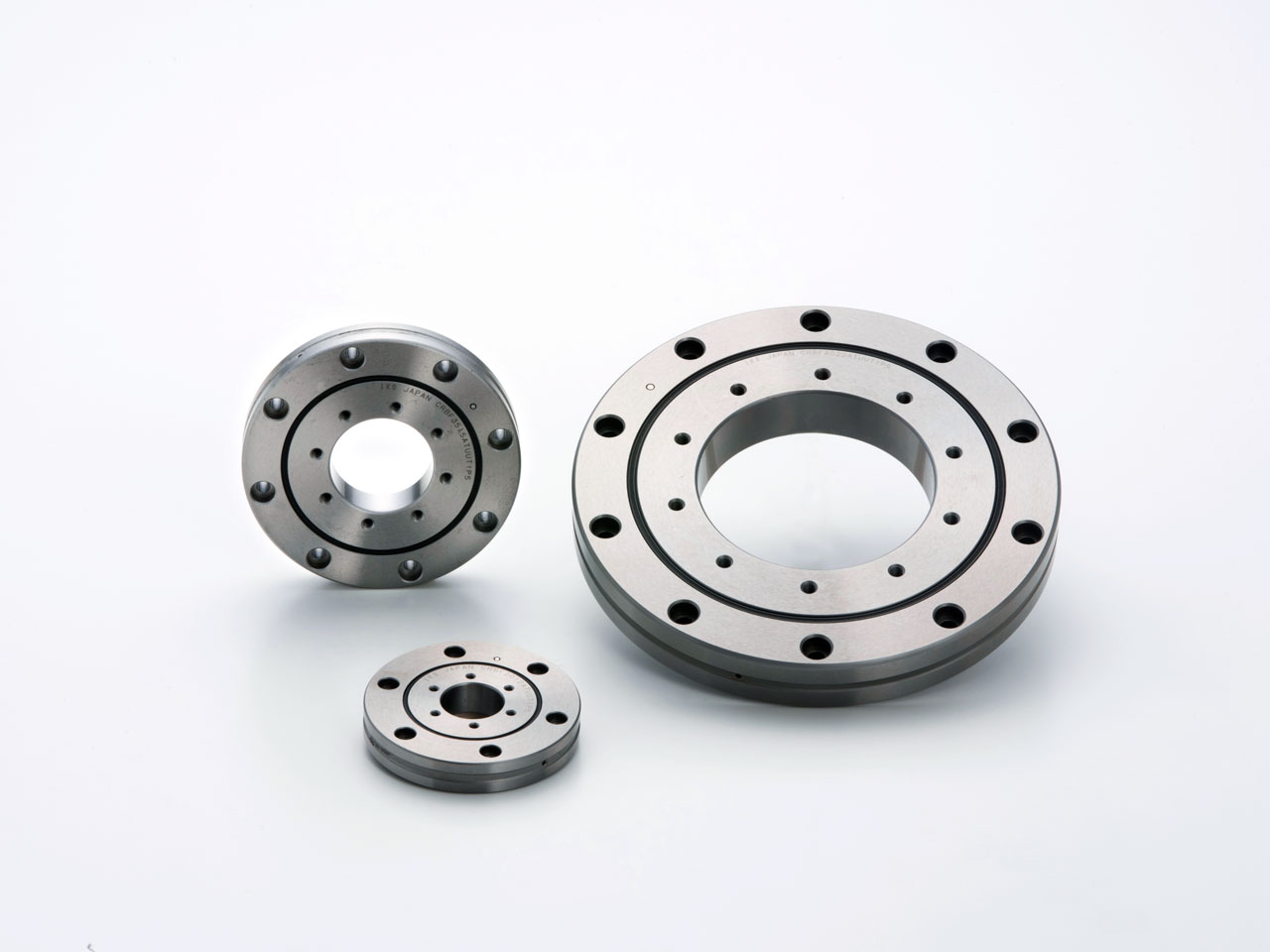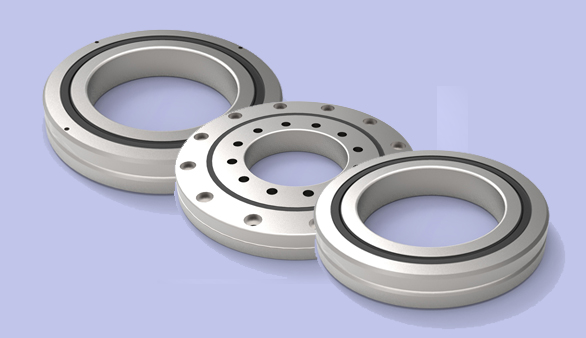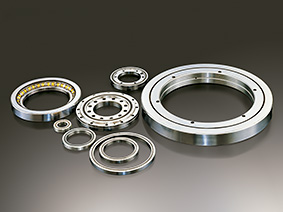
Can you provide examples of scenarios where precision and rigidity are crucial with cross roller bearings?
Precision and rigidity are critical requirements in various scenarios where cross roller bearings are employed. These bearings excel in applications that demand accurate motion control, minimal deflection, and high stiffness. Here are some examples of scenarios where precision and rigidity are crucial with cross roller bearings:
- Robotic Arm Joints:
- Machine Tool Spindles:
- Precision Optical Instruments:
- Coordinate Measuring Machines (CMMs):
- Semiconductor Wafer Handling:
- Aircraft Control Surfaces:
- Surgical Robots:
- Solar Tracking Systems:
Robotic arm joints require precise and repeatable motion for tasks such as pick-and-place operations, assembly, and welding. Cross roller bearings provide the necessary rigidity to withstand the loads and maintain accurate positioning, ensuring smooth and controlled movement of the robotic arm.
In machine tools, such as milling machines and lathes, the spindle’s precision and rigidity are crucial for achieving accurate and high-quality machining. Cross roller bearings used in machine tool spindles enable precise rotation with minimal deflection, ensuring the accuracy and surface finish of the machined components.
In precision optical instruments like telescopes and microscopes, cross roller bearings are employed in stages and mounts to enable precise positioning and alignment. The rigidity of these bearings ensures stability and eliminates unwanted vibrations, allowing for clear and accurate observations or measurements.
CMMs are used for dimensional inspection and measurement of complex parts. Cross roller bearings are crucial in the moving stages of CMMs, providing the necessary rigidity and precision to accurately position the probing system. This ensures precise and repeatable measurements with high accuracy.
In semiconductor manufacturing, cross roller bearings are used in wafer handling robots and stages. These bearings enable precise and controlled motion during wafer loading, alignment, and transfer. The rigidity of cross roller bearings ensures accurate positioning of wafers, critical for the manufacturing of integrated circuits with nanoscale precision.
Aircraft control surfaces, such as ailerons, elevators, and rudders, require precise and responsive movement for safe and efficient flight control. Cross roller bearings are employed in the hinge mechanisms of these control surfaces, providing the necessary rigidity and accuracy to ensure precise control inputs and aerodynamic stability.
In surgical robots, precision and rigidity are crucial for performing delicate and precise surgical procedures. Cross roller bearings are used in robotic joints and arms to enable precise and controlled movement of surgical tools. The rigidity of these bearings ensures accurate positioning and minimizes any unintended motion during surgery.
In solar tracking systems, which orient solar panels to maximize energy capture, precision and rigidity are essential for accurate tracking throughout the day. Cross roller bearings used in solar tracking systems provide the necessary stiffness to withstand wind loads and maintain precise alignment, optimizing energy generation from sunlight.
In summary, precision and rigidity are crucial in scenarios where cross roller bearings are utilized. Examples include robotic arm joints, machine tool spindles, precision optical instruments, coordinate measuring machines, semiconductor wafer handling, aircraft control surfaces, surgical robots, and solar tracking systems. In these applications, cross roller bearings ensure accurate motion control, minimal deflection, and reliable performance, allowing for precise operations, measurements, and control in various industries.

How do cross roller bearings contribute to the proper functioning of aerospace components?
Cross roller bearings play a crucial role in ensuring the proper functioning of aerospace components. These bearings offer several benefits and contribute to the reliable and efficient operation of various aerospace systems. Here’s a detailed look at how cross roller bearings contribute to the proper functioning of aerospace components:
- Compact Design:
- High Load Capacity:
- Stiffness and Precision:
- Low Friction and Energy Efficiency:
- High-Speed Capability:
- Reliability and Durability:
Cross roller bearings have a compact design that allows for efficient use of space in aerospace components. Their thin and lightweight structure enables them to be integrated into tight spaces without adding excessive weight or bulk. This compact design is especially advantageous in aerospace applications where weight reduction and space optimization are critical factors.
Cross roller bearings are designed to handle high radial, axial, and moment loads. They feature crossed rollers arranged at right angles to one another, which enables them to distribute load forces in multiple directions. This high load capacity is essential in aerospace components that experience significant forces and loads during operation, such as landing gear systems, control surfaces, and actuators.
Cross roller bearings offer high stiffness and precision, making them suitable for aerospace applications that require precise positioning and motion control. Their unique design and preloaded arrangement of rollers result in minimal deflection and high rigidity, ensuring accurate and repeatable performance. Aerospace components, such as robotic arms, control mechanisms, and guidance systems, benefit from the stiffness and precision of cross roller bearings.
Cross roller bearings are designed to minimize friction and energy losses. The rolling contact between the crossed rollers and raceways reduces friction, resulting in smooth and efficient motion. This low friction characteristic contributes to energy efficiency in aerospace systems, where reducing power consumption and maximizing operational efficiency are crucial considerations.
Cross roller bearings are capable of operating at high speeds without sacrificing performance. Their low rotational inertia and optimized design allow them to handle rotational speeds encountered in aerospace applications, such as turbine engines, gearbox systems, and rotating assemblies. The ability to maintain performance and reliability at high speeds is essential for aerospace components that operate under demanding conditions.
Cross roller bearings are engineered to provide high reliability and durability in aerospace environments. They are designed to withstand harsh operating conditions, including high temperatures, vibration, shock, and contamination. Aerospace components, such as aircraft engines, landing gear, and control systems, rely on the robustness and longevity of cross roller bearings to ensure continuous and safe operation throughout their service life.
In summary, cross roller bearings play a vital role in the proper functioning of aerospace components. Their compact design, high load capacity, stiffness, precision, low friction, high-speed capability, and reliability contribute to the efficiency, performance, and safety of various aerospace systems. By providing reliable motion control, load support, and durability, cross roller bearings are essential components in aerospace applications, enabling the successful operation of aircraft, spacecraft, and other aerospace platforms.

What factors should be considered when selecting a cross roller bearing for a specific application?
When selecting a cross roller bearing for a specific application, several factors need to be carefully considered. These factors ensure that the chosen bearing meets the requirements of the application in terms of performance, reliability, and longevity. Here are the key factors to consider when selecting a cross roller bearing:
- Load Requirements:
- Precision and Accuracy:
- Space Limitations:
- Environmental Conditions:
- Speed and Acceleration:
- Mounting and Integration:
- Maintenance and Service Life:
- Cost and Availability:
First and foremost, the load requirements of the application must be assessed. Consider the magnitude and direction of the loads, including radial, axial, and moment loads. Determine the maximum load capacity needed and ensure that the selected cross roller bearing can handle the anticipated loads without excessive deflection or premature failure.
If the application requires precise positioning or motion control, the level of required precision and accuracy should be evaluated. Cross roller bearings are known for their excellent rotational accuracy, but the specific requirements of the application should be matched with the bearing’s precision level. Consider factors such as the permissible deviation, repeatability, and smoothness of operation.
Assess the available installation space in the application. Cross roller bearings are compact and space-saving, making them suitable for applications with limited space. Measure the dimensions and ensure that the selected bearing can be accommodated without interference or compromising other components.
Consider the environmental conditions in which the cross roller bearing will operate. Evaluate factors such as temperature, humidity, dust, chemicals, and potential exposure to contaminants. Choose a bearing that is designed to withstand the specific environmental conditions to ensure optimal performance and longevity.
Assess the required speed and acceleration parameters of the application. Cross roller bearings have speed limitations, and exceeding these limits can lead to increased friction, heat generation, and premature wear. Consider the rotational speed and acceleration requirements and select a bearing that can operate within the desired speed range without compromising performance or reliability.
Consider the mounting and integration aspects of the cross roller bearing. Evaluate the mounting method, available space for mounting components, and the overall system design. Ensure that the selected bearing can be easily integrated into the application with appropriate mounting options and compatibility with other system components.
Assess the maintenance requirements and expected service life of the cross roller bearing. Consider factors such as lubrication needs, accessibility for maintenance, and the desired operating lifespan. Choose a bearing that aligns with the maintenance capabilities and longevity expectations of the application.
Evaluate the cost-effectiveness and availability of the cross roller bearing. Consider the budget constraints of the application and compare the pricing of different bearing options. Additionally, ensure that the selected bearing is readily available from reliable suppliers to avoid delays or difficulties in sourcing replacements or spare parts.
By carefully considering these factors, it is possible to select the most suitable cross roller bearing for a specific application. Taking into account the load requirements, precision needs, space limitations, environmental conditions, speed and acceleration parameters, mounting considerations, maintenance requirements, and cost-effectiveness ensures that the chosen bearing will deliver optimal performance, reliability, and longevity in the intended application.


editor by CX 2024-02-16